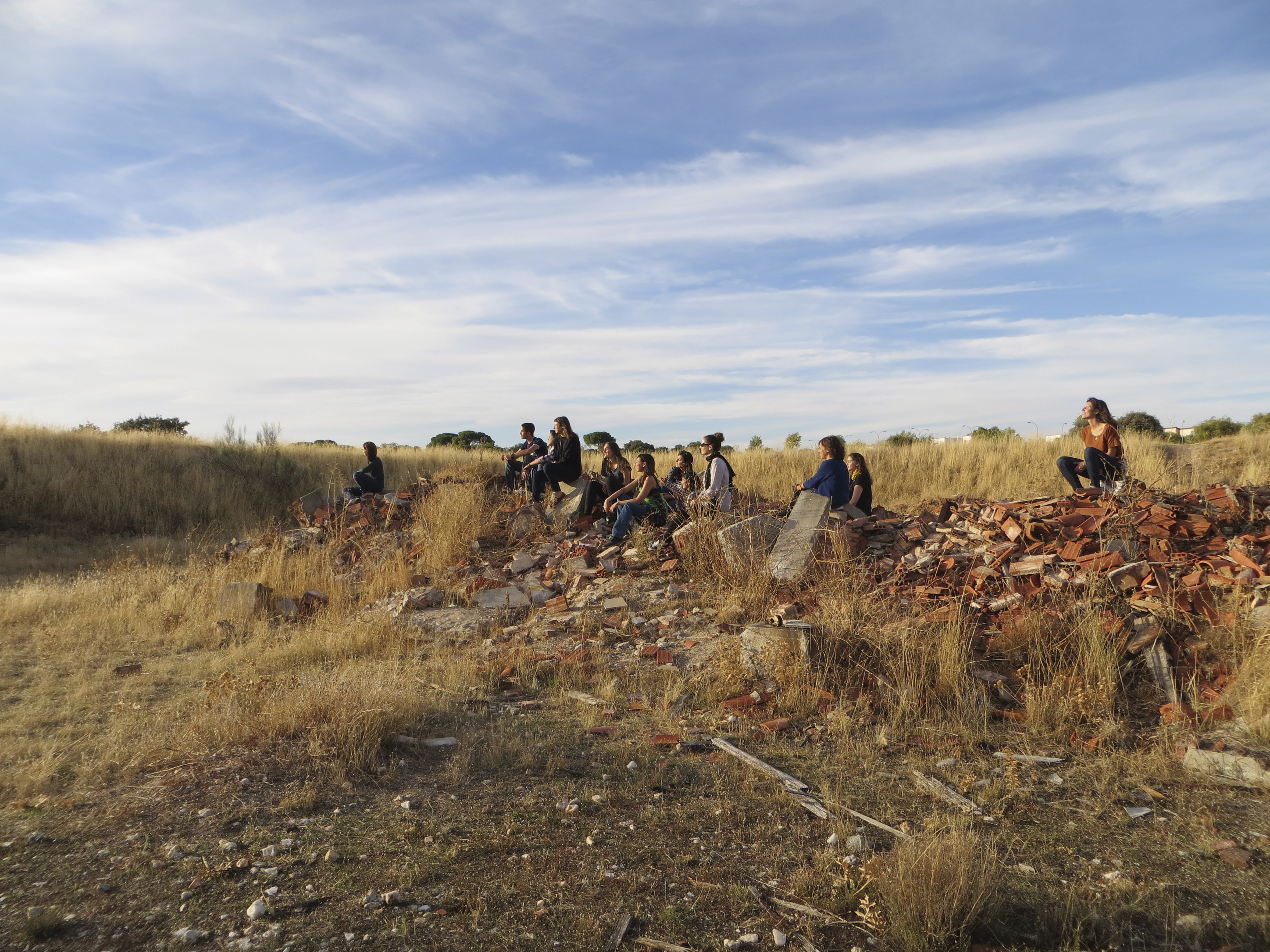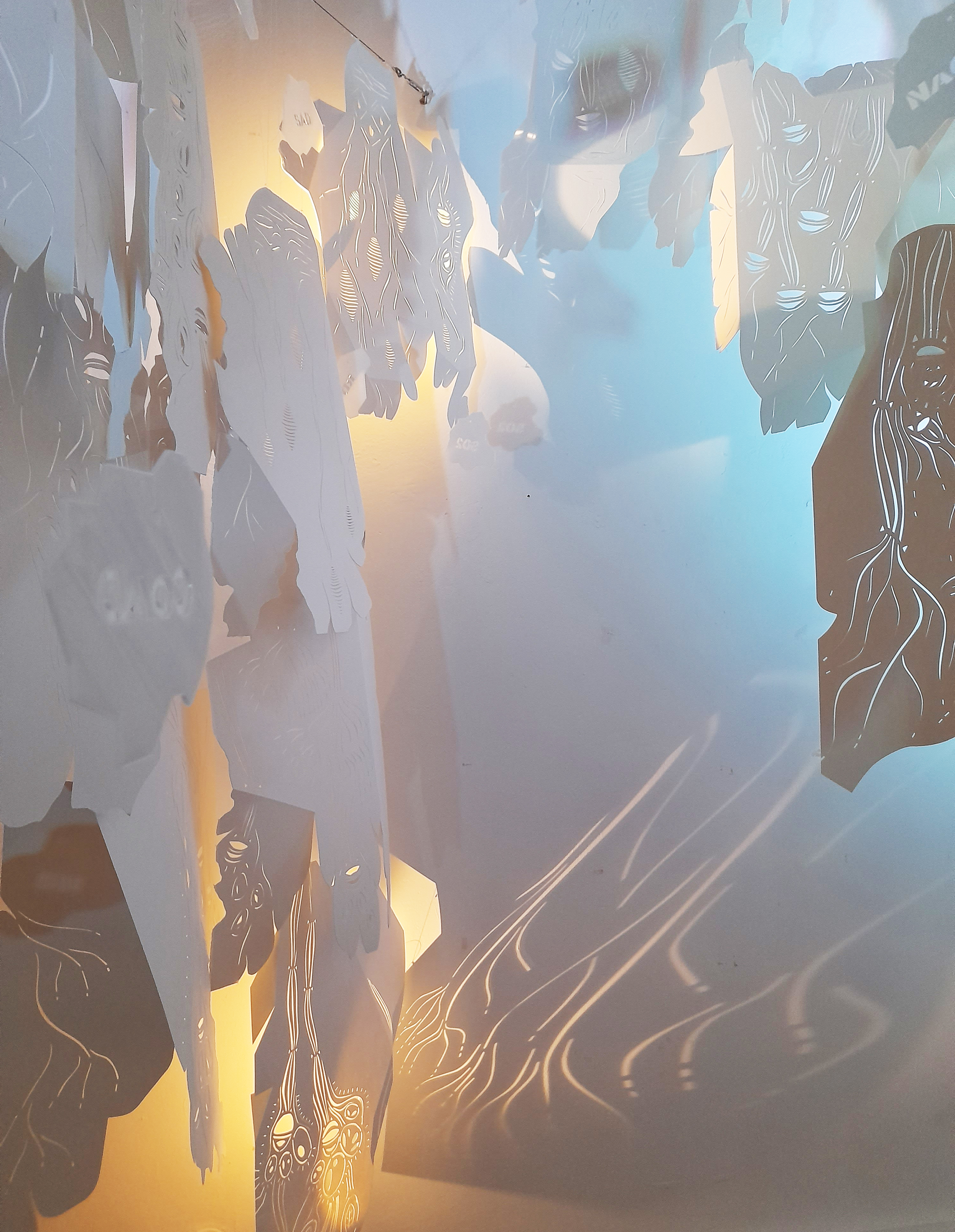"The artistic proposal will provide the sun narrative with agency and the community with a voice"

The architect and landscape specialist María Auxiliadora Gálvez is the selected artist for the artwork production of La Sobarriba's 'Narrativas Solares' (León), the project that seeks a fair ecological transition within the territory. The art piece is conceived as a "pavilion" where the citizen-commissioners' struggles and vindicative claims are registered.
The architect and landscape specialist María Auxiliadora Gálvez is the selected artist for the artwork production of La Sobarriba's 'Narrativas Solares' (León). In this interview she reveals some of the keys that will serve as inspiration for the artwork production.
You have stated that "architecture can be a way for different —and not only human— forms of lives, to interconnect". This is a good starting point for you to introduce us to your practice, background, and artistic vision.
I am a trained architect, but I have always been very close to the world of dance. While I was writing my PhD on dance and architecture, I started working more intensely with my body, as well as teaching in college. I would use perception or biology knowledge, and put my body to the ground, to analyse how all this could be brought into architectural systems.
How did you manage to connect such different worlds as biology and architecture?
The connection was fine-tuned as I approached the somatic field of the 'Feldenkrais Method'. This method provides a very interesting vision on the living world, in that the human being is intertwined with the animal world, despite our efforts to set them apart. Our motion patterns and ways of perception are shared with those of some animals.
It was from that notion that I started to learn more about living tissues, which can be observed in our own body, and to apply them to architecture. A transversal world of connexion with non-human beings exists: they work in similar ways and can be allied with architecture. I started working on 'somatic architecture', an architecture that aims at creating a synergy with the living world to provide space for all types of bodies.
How was the initial contact with the 'Plataforma para la Defensa de la Sobarriba's mediator and citizen-commissioners’ group?
The first contact was with 'Narrativas Solares’' mediator Alfredo Escapa. I was very interested in the proposal from the beginning, since it is aligned with my work, what I call 'somatic activism': a combination of architecture and the somatic or corporeal and the execution of varied actions implemented in places that stand for something. At the same time, I had already worked in several projects revolving around the sun, and in some community and collective-building facilities, in the waste grounds of Madrid with sunset-centered initiatives.

'Narrativas Solares', first open call selected project by Concomitentes that highlights the urgency to search for alternatives and different languages to face a sustainable and fair ecological transition. What is your opinion on the challenge pursued by the project?
When Alfredo told me what the intention was with 'Narrativas Solares', I saw it as an opportunity to work in something I believe to understand, something I had myself wondered about, and with a community that was also defending a non-extractivist ecological transition in order to question how to take this step beyond "the energy source" and "how this affects people, societies and territories".
Your background as an architect and artist perfectly fits with what the project is looking for.
This connection between my background and the art commission was partly by chance. To me it is important that every artwork remains open so that, regardless of your background and interests, the piece be alive and developed with the citizen-commissioners. The interests are already there: I'm interested in ecology, the territory, the building sector, the living world... but what I do is also imbued with the idea that "different bodies have their own voices", and I want this art piece to give voice to the citizen-commissioners.
Concomitentes is a cultural project that tackles social issues through an artistic proposal, how do you envision the artistic work to help these territories?
I believe in the transformative power of arts and culture. There is a quote that always comes to mind when talking about this: "In a time of violent simplification, there can be no revolutionary movement without a massive enrichment of perceptions", by Josep Rafanell i Orra. I do believe a big part of the job is just that, to enrich the perceptions that allow us to see other sensitivities.
For instance, to see the sun not just like an energy source, but like a life-breeding element that creates an interspecies world, a seed that activates the connection of our life on this planet. I’m talking about the narratives that can be told by the sun: this and other life forms and their relation to people, symbolism even, or the possibility of approaching an art piece looking for "what the sun has to tell today".
I believe this could be revolutionary, since it alters society's underlying imaginaries, the ones that allow us or prevent us from doing certain things.
"Art and architecture, if given space, are revolutionary weapons to boost the enrichment of perceptions. Concomitentes has a relevant role on this field"
What does it mean for you to work on a participatory project and to incorporate it as a layer into your creative work?
It is essential. We've just started working last July; for a week we were walking around the territory and assessing the possible spots for intervention. It has also been very rewarding to discover the knowledge and nuances present in the group. There are really fascinating people.
How were those meetings and how have you taken in the community's wishes?
We are in the middle of the process. In fact, there is a meeting on Monday. Besides discussing ideas around what we want, I would be interested in activating a somatic effort into the group that would nurture the art piece itself: from its focus, to how are people's movement produced around the territory, how can the piece initiate or give closure to habits, or how can the place become one for activism and retreat for this much-needed deliberations.
What main ideas from the meetings and exchanges with the citizen-commissioners would you underline?
The idea that the sun and the moon are connected. They referred how the art piece could act as an observatory or have a scientific component to it, helping to understand how the movement of the sun makes for the seasons. They also mentioned the act of walking around the territory. Among others, these are elements that will be found in the piece.
And how was the exchange with Alfredo, who acts as the link between you and the citizen-commissioners?
The mediator's work is a very difficult one, but I believe Alfredo does an excellent job. He says things in a very honest and careful way, he really listens, and he sets guidelines both for the citizen-commissioners and myself. He does an outstanding and remarkable job.
He equally fosters the realm of possibility. He is inclined to limitless collaboration. What I've seen is a close-knit community, made of diverse people with their own voice and able to negotiate with great generosity. Having all this, I want to reciprocate and be equally generous, I want to listen and be able to make proposals.
I believe Alfredo to be a big reason why this is moving forward in the way it is doing. So, the mediation work is being satisfactory and detrimental in the composition of the art piece.

How do you foresee the artistic proposal and how advanced the draft reflecting the collective desire is?
Originally, the commission was very open. My work is based on architecture and dancing, but I have also worked in the arts, doing performances or landscaping. I like the mixing of formats. At the beginning, a mobile piece was considered. We discussed its possible size and whether it would be something people could stand on or just visit.
At the moment we are at a point where we envisage a sort of "pavilion" that is taking a circular shape and would be facing the sun exhibition —consisting of collective skin scales, acting as a sort of interspecies skin that react to the sunlight, hence telling different stories through the changing shadow. In the opposite side of such pavilion, the citizen-commissioners' activism, struggles and vindicative claims would be reflected.
This would make for a kind of mound where people can continue to meet. The craft of sebes or live fences will we applied in one part of the piece, so that something like a forest will unfold as they grow. This proposal gives agency to the sun narrative on the one hand, and voice to the neighbours on the other.
I think it can turn out to be gorgeous, although changes along the way will be properly respected.
Could you share the production schedule details for this year with us?
Besides the summer visit and the September meeting in which we discussed the initial ideas, some talks will be held with the University in November. The collective building of the pavilion and the live fences will also commence on that month. I would also like to take advantage of the place we have selected, a land common of León, for approaching the "somatic experience".
"To move forward, getting in touch with the professionals who will build the piece would be necessary in order for the piece to be infused with their knowledge. I estimate two extra months of collective work. Then the production itself will begin, so that the piece can be inaugurated towards the end of spring."
How is sustainability reflected on the artwork?
The silent battle of "ecological transition" that we are all part of is being waged; a battle that is taking its bigger toll on the rural areas, where macro sites for (in this case) solar power plants are being installed. The main question the artwork revolves around and wants to stress is "we want to be sustainable, but how are we to do it?".
Sustainability cannot be measured by the materials or energy type employed. Almost all our attitudes concerning the living creatures and the land need to change. The piece aims at reaching that root. Moreover, it will be done by local crafts, trades, and materials. The activism of enriching perceptions needs to be at the basis of sustainability. Certain ways of tackling the ecological transition require our vital commitment towards the other species. This is what the artwork and Concomitentes will put the focus on.
The resulting art piece will be left as a legacy for the community. How do you think this piece could contribute to building ties and new networks in the community?
What I would like to see is for the piece to be understood as something belonging to the community, and that a spontaneous life agenda will develop around it, since it is located at a meeting point in an accessible area, nearby a path. I hope the piece can allow for other processes to unfold. If the community were to meet, I'd like to imagine them doing a picnic at the mound. This is perhaps an idealisation and romanticisation from my part. It probably won't depend so much on what I say now, but on how they take ownership of the piece and make it a part of their lives.
What I would like is that in the future the piece becomes a sun path-oriented forest, like an observatory, even if the piece itself disappears as a consequence of the live fences’ growth. I don't believe in the continuity of the object itself, but of that of the vindication practice and the perceptive experience it may follow, and that relies upon the citizen-commissioners.
If the art piece generates life, it would have succeeded.
